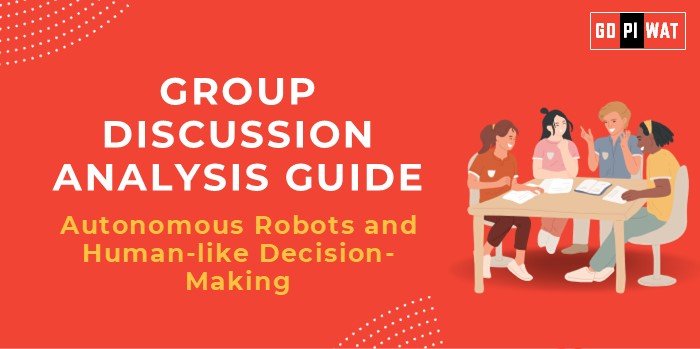🤖 Group Discussion Analysis Guide
🌐 Introduction to Autonomous Robots and Human-like Decision-Making
The integration of autonomous robots capable of human-like decision-making has sparked significant debate regarding their trustworthiness. While these robots offer potential benefits across various sectors, concerns about ethics, safety, and reliability persist.
📊 Quick Facts and Key Statistics
- 🌍 Global AI Market Size: Projected to reach $190 billion by 2025, with automation as a core sector.
- ⚙️ Robot Density: Industrial robots in manufacturing reached 113 per 10,000 employees globally, highlighting their widespread use.
- 🚗 AI Errors: Studies indicate that autonomous vehicles have an error rate of 0.18% in perception errors, contributing to trust issues.
- 🔬 Ethics Investments: Over 40% of major tech companies are investing in ethical AI to mitigate trust concerns.
👥 Stakeholders and Their Roles
- 🏛️ Government and Regulators: Establish laws and safety guidelines for autonomous systems.
- 💻 Tech Companies: Develop AI technologies and frameworks for responsible usage.
- 🙋♂️ Citizens and Users: Directly impacted by robots in everyday applications; their feedback is crucial.
- 🎓 Research Institutions: Lead studies on ethical AI, safety, and improvements.
🏆 Achievements and Challenges
Achievements
- ⚡ Enhanced Efficiency: Robots streamline repetitive tasks, increasing productivity in sectors like manufacturing and healthcare.
- 🎯 Accuracy in Specific Tasks: Autonomous vehicles have the potential to reduce accident rates by minimizing human error.
- 🩺 Medical Robots: Robotic assistance in surgeries has improved precision and patient outcomes.
Challenges
- ⚖️ Ethics and Accountability: Assigning responsibility when robots make errors is complex.
- 🔀 Reliability in Complex Situations: Robots may struggle to make human-like judgment calls in unpredictable scenarios.
- 🌍 Global Comparisons: Countries like Japan have integrated robots into elderly care, but privacy concerns limit similar adoption in Western countries.
🗣️ Structured Arguments for Discussion
Supporting Stance: “Autonomous robots enhance operational efficiency, reducing human error and allowing humans to focus on strategic tasks.”
Opposing Stance: “Trusting robots with decision-making is risky due to accountability and ethics issues, especially when their ‘judgment’ can cause harm.”
Balanced Perspective: “While autonomous robots can enhance productivity, effective regulations are essential to ensure they remain safe and ethical.”
💬 Effective Discussion Approaches
Opening Approaches
- 📈 Impact Opening: “The global AI market, valued at $190 billion, underscores the significance of automation in daily life, but trust remains a hurdle.”
- ⚖️ Ethics Opening: “Can robots make ethical choices in life-or-death scenarios, or does such trust compromise human values?”
Counter-Argument Handling
“While robots excel in efficiency, human oversight remains crucial in situations requiring empathy, creativity, or moral judgment.”
🔍 Strategic Analysis of Strengths and Weaknesses
Strengths: Efficiency in repetitive tasks, high precision in controlled environments, scalability.
Weaknesses: Limited flexibility in unpredictable scenarios, lack of emotional intelligence, potential for significant error in complex situations.
Opportunities: Expanded roles in healthcare, agriculture, and environmental monitoring.
Threats: Public trust issues, cybersecurity risks, ethical concerns.
🎓 Connecting with B-School Applications
Real-World Applications: B-school students can explore projects on ethical AI frameworks, risk management in automation, and public trust initiatives.
Sample Interview Questions:
- 🤔 “How can businesses address ethical concerns in deploying autonomous systems?”
- 💬 “Discuss the implications of relying on robots in customer service.”
Insights for B-School Students: Understanding AI ethics, regulatory frameworks, and the social implications of automation will be increasingly valuable.
📄 Conclusion
While autonomous robots offer significant advantages in efficiency and precision, their trustworthiness in human-like decision-making roles remains a complex issue. Balancing technological advancement with ethical considerations and human oversight is essential to ensure these systems serve society effectively and responsibly.


